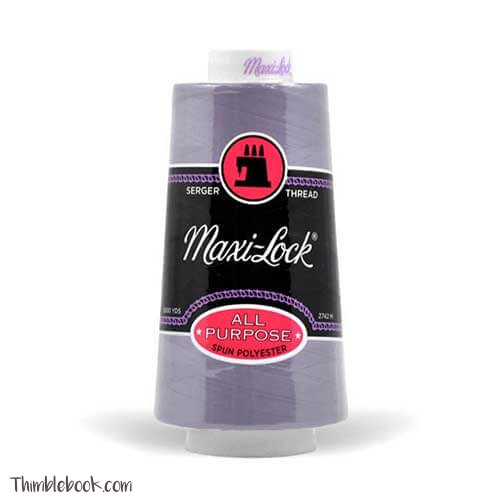How to Sew Knits without a Serger
*This post may include affiliate links, which allow me to make a small commission off your purchases. The money is earned at no additional cost to you.
Sewing enthusiasts often wonder how to sew knits without a serger. Here’s tips for sewing knits on a regular sewing machine.
Work with the right settings.
Set your sewing machine to a zigzag stitch for knit fabrics. Your zigzag stitch must have a narrow width with a short length. Short length stitches grow with stretch fabric, while the narrow width provides extra stability.
You may opt to use a stretch stitch for seams.
A stretch stitch makes two stitches forward and one stitch backwards. The stitch stretches and creates very strong seams. However, the stitch doesn’t work so well with thin knit fabric.
Adjust your thread tension
Thread tension is different for every sewing machine. Thin knits don’t need much thread tension, but thick knits need more pressure.
Check your foot pressure.
The pressure foot stretches fabric when it presses down on the fabric too much. A walking foot fixes this problem. However, the problem is also fixed by adjusting the pressure.
Test for the best!
As you’ve guessed, testing the settings on your sewing machine is important because everyone’s sewing machine is different. For example, my Janome Sewist 500 works just fine with a standard pressure foot pressure for all projects without a walking foot. However, my heavy Emdeko JA21 sewing machine foot pressure must be reduced before sewing any knit fabrics.
Use the right needle
Always use a ball point needle for knit garments. You’ll most commonly use a size 14 needle for medium to light weight knit fabrics. Very lightweight fabrics, like ITY or a burnout jersey, will take a size 11. Occasionally, you’ll find yourself using the upper range needle weights (16+) for very thick materials like ponte de roma or pique knit.
I must mention that some sewing enthusiasts prefer to use twin needles for sewing knit garments. While some bloggers suggest twin needles in how to sew knits without a serger tutorials, I shy away from making the recommendation because:
- All sewing machines do not accept twin needles.
- Twin needle stitches have never had longevity on my own garments. I’ve found the stitches pulling loose after a few washes.

Rather than using a twin needle, use Maxi Lock stretch thread for your bobbin thread.
Standard sewing machine thread is stiffer than a pressed suit. It doesn’t matter what kind of stitch you use. Regular thread breaks very easily when used on a stretchy garment. Nobody has time for ripped seams or broken stitches. So, just make your life easier and use a stretch thread for the bobbin thread.
Maxi lock stretch bobbin thread Maxi lock stretch bobbin thread moves with knit garments, while standard top thread gives stitches just the right amount of firmness. Honestly, I only own 3 maxi lock stretch thread colors: black, white, and grey. Nobody can see the bottom thread. Therefore, I always use the same 3 maxi lock stretch colors for every garment.

Learning how to sew knits without a serger? Get good notions.
Commercial pattern directions often recommend using woven bias tape for shoulder seams and/or a neckline. I’ve found that you have to experiment to find the best remedy based upon what type of garment you are sewing.
I always reinforce shoulder seams with clear elastic. However, my reinforcements of knit necklines vary based on the garment. I started reinforcing the top below with knit bias tape. However, it started stretching out of place after the first wear. So, I ended up removing the tape and replacing it with a woven bias tape that held up a lot better.

Knits don’t fray, but finish the inside.
The last step to completing your perfect garment is to finish the inside. Great finishing stitches increase the longevity of garments and give them a professional look. You can either use a zigzag or use your standard sewing machines’ overlock stitch.

No Comments